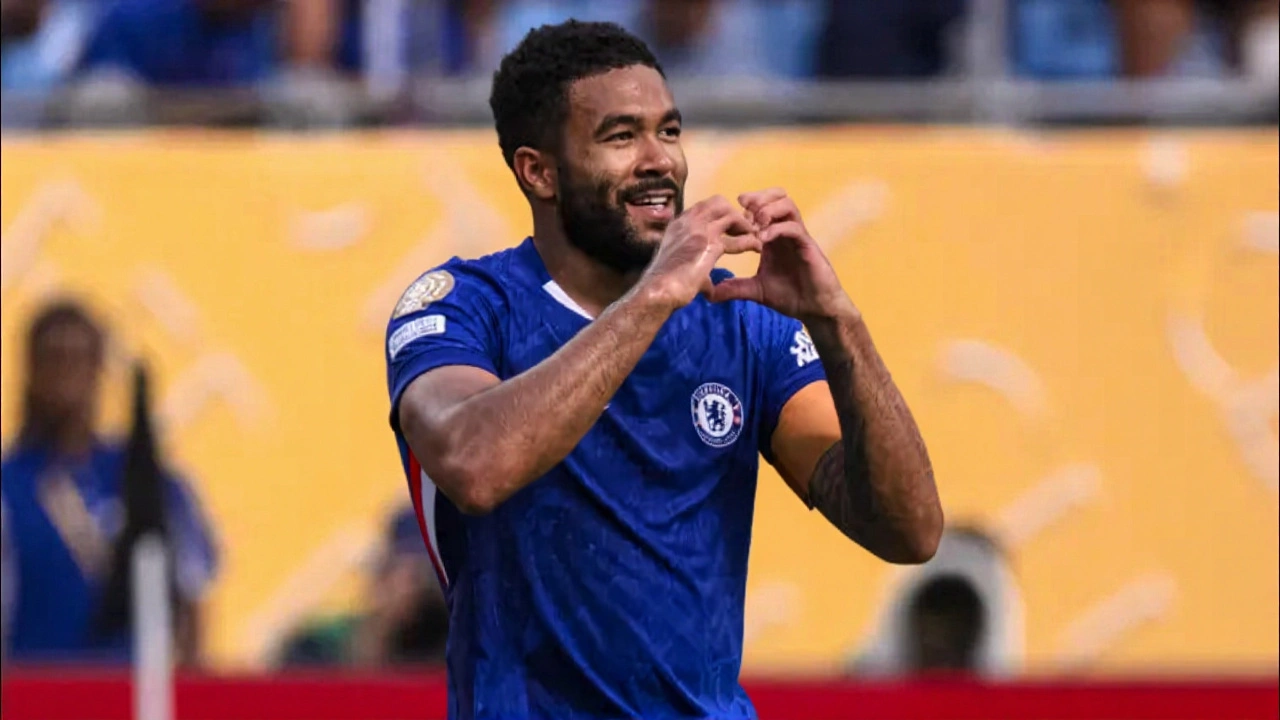Chelsea stunned Barcelona 3-0 at Stamford Bridge on Tuesday, November 25, 2025, in a performance that may well define Chelsea FC’s resurgence under manager Enzo Maresca. The win, sealed by Estêvão’s breathtaking solo goal and Liam Delap’s long-awaited strike, not only avenged last season’s group-stage exit but put Chelsea FC firmly on track for the UEFA Champions League 2025/26 last 16. With Stamford Bridge rocking and FC Barcelona reduced to 10 men after Ronald Araújo’s 43rd-minute red card, this was more than just three points—it was a statement.
How It Unfolded: From Disallowed Goals to Breakthrough
The opening minutes were chaotic. At the 3rd minute, Enzo Fernández buried a low drive from the edge of the box—but the goal was chalked off for offside. Another Fernández strike, this time from a free kick in the 22nd minute, was similarly ruled out. Fans groaned. But the frustration was short-lived. At 26’, a corner from Marc Cucurella was flicked on by Pedro Neto, Ferran Torres cleared it off the line, and the ball ricocheted off Jules Koundé’s thigh and into the net. Own goal. 1-0. The crowd erupted.
Barcelona’s attack, led by Robert Lewandowski and Lamine Yamal, looked sharp early. Ferran Torres missed a golden chance in the 5th minute, slicing wide from six yards. But the hosts controlled possession with surgical precision. Moisés Caicedo and Reece James dictated tempo, while Enzo Fernández, despite his two disallowed goals, was relentless in breaking lines.
The Turning Point: Araújo’s Red and Barcelona’s Collapse
Then came the 43rd minute. Ronald Araújo, Barcelona’s captain and defensive rock, lunged into a reckless challenge on Estêvão near the halfway line. No ball. Just studs up. The referee didn’t hesitate. Red card. The FC Barcelona bench exploded in protest, but the damage was done. With 10 men, Barcelona’s high line became a liability. The away side’s midfield—Frenkie de Jong, Eric García, and Ferran López—was suddenly isolated.
"They were already struggling to cope with Chelsea’s press," said ESPN analyst Tom Rinaldi in his post-match breakdown. "Losing Araújo didn’t just reduce their numbers—it shattered their structure. Everything they built collapsed after that."
Estêvão’s Moment of Brilliance
Chelsea didn’t just sit on their lead. They attacked. And in the 58th minute, Estêvão delivered a goal worthy of the Champions League stage. Picking up the ball near the left flank, he danced past Alejandro Balde, cut inside past Eric García, and fired a curling left-footed shot past Joan García. The ball kissed the crossbar before nestling into the top corner. The stadium exploded. Fans chanted his name. It was the kind of goal that turns teenagers into lifelong supporters.
"That wasn’t just skill—it was nerve," said former Chelsea winger John Terry on BT Sport. "He didn’t look scared. He looked like he belonged. And he did. That’s what Champions League nights are made of."
Delap’s Redemption and the Final Nail
Manager Enzo Maresca brought on Liam Delap in the 59th minute, replacing Pedro Neto. Delap, who hadn’t scored since the Club World Cup final in December 2024, had been under pressure. But in the 73rd minute, he finished a counterattack with clinical ease. A long ball from Cucurella found him sprinting behind the defense. One touch to kill it. One more to slot it past García. 3-0.
"It’s been a rough few months," Delap said post-match. "But this? This is why you fight. This is why you stay."

What This Means for the Race to the Last 16
With the win, Chelsea FC leapfrogged Napoli into second place in Group E, now sitting on 10 points with two games left. A win against Lille in France on December 10 and a home game against Red Bull Salzburg on December 17 will almost certainly secure direct qualification to the knockout stage. Barcelona, meanwhile, sits in third with just 5 points—facing elimination unless they win both remaining fixtures and hope Napoli slip up.
"This was the game they had to win," said UEFA’s match analyst Maria Lopes. "Chelsea showed they’ve evolved from a squad of potential into one of execution. Barcelona still have talent, but they’re missing cohesion. And in this competition, that’s fatal."
Lineups and Substitutions: The Tactical Battle
Chelsea FC (4-2-3-1): Robert Sánchez; Malo Gusto, Wesley Fofana, Trevoh Chalobah, Marc Cucurella; Reece James, Moisés Caicedo; Enzo Fernández; Estêvão; Pedro Neto (false nine); Liam Delap (sub, 59’). Subs: Filip Jörgensen, Tosin Adarabioyo, Benoît Badiashile Mukinayi.
FC Barcelona (4-3-3): Joan García; Jules Koundé, Ronald Araújo (red card, 43’), Pau Cubarsí, Alejandro Balde; Eric García, Frenkie de Jong, Ferran López; Lamine Yamal, Ferran Torres, Robert Lewandowski. Subs: Raphinha (62’), Marcus Rashford (45’), Andreas Christensen (62’), Marc Casadó, Wojciech Szczesny, Denis Kochen.
Notably, Cole Palmer’s absence due to injury left a void in creative depth, but Estêvão and Neto filled it with intelligence. Barcelona’s decision to start Yamal over Raphinha backfired as the 17-year-old was largely neutralized by Chalobah’s tight marking.
Expert Take: Maresca’s Masterpiece
"This was the best 90 minutes we’ve seen from this team in 18 months," said ESPN’s match report. "Maresca’s system—high press, compact midfield, quick transitions—worked perfectly. The players believed. The crowd believed. And now, the rest of Europe should believe too."
It’s not just about the scoreline. It’s about identity. Chelsea are no longer a team rebuilding—they’re a team reasserting themselves. And on this night, they did it against one of Europe’s giants.
Frequently Asked Questions
How did Chelsea’s midfield control the game despite Barcelona’s star players?
Chelsea’s midfield trio of Caicedo, James, and Fernández worked in perfect sync—Caicedo broke up play, James provided width and defensive cover, and Fernández dictated tempo with precise passing. Barcelona’s Frenkie de Jong, though returning from injury, was isolated after Araújo’s red card, leaving no cover for the high line. Chelsea’s pressing forced 23 turnovers in the final third, according to UEFA’s data.
Why was Estêvão’s goal so significant beyond the scoreline?
Estêvão’s goal was his first in the Champions League and the first time since March 2025 he’d scored in a competitive match under pressure. It came against one of Europe’s most experienced defenses and showcased his ability to operate as a true #10 in high-stakes games. Fans at Stamford Bridge are already calling it "the moment he arrived."
What are Barcelona’s chances of advancing now?
Barcelona must win both remaining matches—against Napoli on December 10 and Salzburg on December 17—and hope Napoli lose both. Even then, goal difference is a concern: they trail Chelsea by +5 goals. With Lewandowski aging and Yamal struggling to create, their attack lacks consistency. Elimination is now more likely than not.
How does this result affect Enzo Maresca’s future at Chelsea?
Maresca, in his 18th month at the helm, was under scrutiny after a shaky start to the season. This win, especially against a club of Barcelona’s stature, is a turning point. Sources close to the club say board members are now openly discussing contract extensions. The club’s transfer strategy for January may hinge on whether this momentum continues.
Why was Pedro Neto playing as a false nine?
With Romelu Lukaku injured and Delap coming off the bench, Maresca needed a forward who could drop deep to link play. Neto, normally a winger, has trained extensively as a false nine this season. His movement pulled Barcelona’s center-backs out of position, creating space for Estêvão and Cucurella to exploit—exactly what happened on the first goal.
What impact did the red card have on Barcelona’s tactics?
Barcelona switched to a 4-4-1 with Yamal as a lone striker, but lost all structure. Without Araújo, their defensive organization collapsed. They attempted 18 long balls in the final 40 minutes—up from just 5 in the first half—but only two reached their intended target. The red card didn’t just reduce their numbers—it erased their identity.

